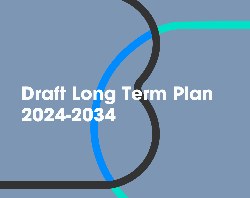Official Cash Rate unchanged at 1 percent
13 November 2019
The Monetary Policy Committee has decided to keep the Official Cash Rate (OCR) at 1.0 percent. Employment remains around its maximum sustainable level while inflation remains below the 2 percent target mid-point but within our target range. Economic developments since the August Statement do not warrant a change to the already stimulatory monetary setting at this time.
Economic growth continued to slow in mid-2019 reflecting weak business investment and soft household spending. We expect economic growth to remain subdued over the remainder of the calendar year. We will continue to monitor economic developments and remain prepared to act as required.
Trading-partner growth has also slowed. Growth in global trade and manufacturing is weak and uncertainty remains high, dampening global business investment. However, New Zealand’s export commodity prices have been robust, underpinning a positive terms of trade. The lower New Zealand dollar exchange rate this year is also providing a useful additional offset to the weaker global economic environment.
Domestic economic activity is expected to increase during 2020 supported by low interest rates, higher wage growth, and increased government spending and investment. The low level of the OCR has flowed through to lower lending rates more generally, which support spending and investment. Rising capacity pressures are projected to promote a pick-up in business investment.
Interest rates will need to remain at low levels for a prolonged period to ensure inflation reaches the mid-point of our target range and employment remains around its maximum sustainable level. We are committed to achieving our inflation and employment objectives. We will add further monetary stimulus if needed.
Summary Record of Meeting - November 2019 Statement
The Monetary Policy Committee agreed that economic developments since the August Statement had been offsetting for the monetary policy outlook. The members discussed the projections and agreed that they formed a sound basis for their monetary policy decision, but noted the near-term downside risks to the economy.
The Committee agreed that accommodative monetary policy remains necessary to continue to meet their inflation and employment objectives.
The members noted that employment remains close to its maximum sustainable level while consumer price inflation remains below the 2 percent target mid-point but within the 1 to 3 percent target range.
The Committee noted that global growth had continued to slow. The members noted the weak global trade growth and continued elevated uncertainty.
The Committee discussed the impact of the global slowdown on New Zealand through trade, confidence, and financial channels. While the impact on New Zealand was seen to be negative overall, some members noted that our export commodity prices remained elevated which was boosting our terms of trade and national income.
The Committee noted the slowdown in domestic GDP growth. They also noted that business surveys suggest weak growth has continued over the second half of 2019. The members discussed the slowdown in potential output growth, which may explain the economy remaining near capacity over this time. Weaker demand was expected to reduce capacity pressure in the near term, and ease some of the recent labour market tightness.
The members anticipated a lift in economic growth during 2020 from the easing of monetary policy that has taken place since early 2019 and from stronger fiscal stimulus.
The Committee noted the signs that recent monetary stimulus was flowing through the economy and supporting the medium-term growth projections. The members noted that the reduction in retail lending rates over the past year would support the outlook for consumption and broad investment. The Committee noted the lower exchange rate this year as another channel supporting the economy.
The Committee discussed the impact of fiscal stimulus on the economy. The members noted that fiscal stimulus could be greater than assumed. The members also discussed the potential delays in implementing approved spending and investment programmes.
The Committee discussed the recent inflation developments and, in particular, the recent increases in wage and non-tradables inflation. The members noted the increase in inflation and wages is an expected outcome of monetary stimulus transmitting through the economy. Some members noted the pick-up in non-tradables inflation in the September 2019 quarter was partly due to administrative prices.
The Committee also noted the slight decline in one- and two-year ahead survey measures of inflation expectations. Nevertheless, long-term inflation expectations remain anchored at close to the 2 percent target mid-point and market measures of inflation expectations have increased from their recent lows.
The Committee members discussed some of the reasons why long-term interest rates were near secular lows. They noted the contributions from global factors, including ongoing low inflation, declining neutral interest rates, and policy uncertainty. Given this, the Committee expected that low global interest rates would persist for some time.
The Committee discussed the effect of low interest rates on financial stability. The members noted the risks to the soundness of the financial system. They discussed the relationship between financial stability and the employment and inflation objectives, noting the current deployment of financial stability policies. The Committee agreed it was appropriate to continue to set interest rates to meet its inflation and employment objectives.
The Committee noted the Bank’s work programme assessing alternative monetary policy tools in the New Zealand environment, as part of contingency planning for an unlikely scenario where additional monetary instruments are required.
The Committee agreed that it was necessary for monetary policy to remain stimulatory for some time to meet its employment and inflation objectives. In terms of least regrets, the Committee discussed the relative benefits of inflation ending up in the upper half of the target range relative to being persistently below 2 percent.
The Committee debated the costs and benefits of keeping the OCR at 1.0 percent versus reducing it to 0.75 percent. The Committee agreed that both actions were broadly consistent with the current OCR projection. The Committee agreed that the reduction in the OCR over the past year was transmitting through the economy and that it would take time to have its full effect.
The Committee reached a consensus to keep the OCR at 1.0 percent. The Committee noted that the risks to the economy in the near term were tilted to the downside and agreed it would add further monetary stimulus if economic developments warranted it.
Attendees
Reserve
Bank staff: Adrian Orr, Geoff Bascand, Christian Hawkesby,
Yuong Ha
External: Bob Buckle, Peter Harris, Caroline
Saunders
Observer: Caralee McLiesh
Secretary: Chris
McDonald
ends


 Business Canterbury: Urges Council To Cut Costs, Not Ambition For City
Business Canterbury: Urges Council To Cut Costs, Not Ambition For City Wellington Airport: On Track For Net Zero Emissions By 2028
Wellington Airport: On Track For Net Zero Emissions By 2028 Landcare Research: ANZAC Gall Fly Release Promises Natural Solution To Weed Threat
Landcare Research: ANZAC Gall Fly Release Promises Natural Solution To Weed Threat NZ Anti-Vivisection Society: Auckland Rat Lovers Unite!
NZ Anti-Vivisection Society: Auckland Rat Lovers Unite! University of Canterbury: $1.35 Million Grant To Study Lion-like Jumping Spiders
University of Canterbury: $1.35 Million Grant To Study Lion-like Jumping Spiders Federated Farmers: Government Ends War On Farming
Federated Farmers: Government Ends War On Farming



